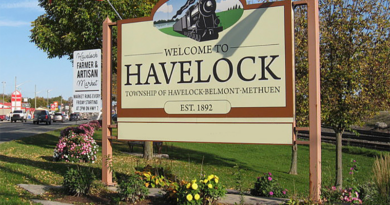How Safe is Your Water?
The iconic Cottage Country setting includes the big dock with the Muskoka chairs situated to look out on the lake – with a cup of coffee in the morning or a glass of wine as the sun goes down. Perfect, right?
Chris Eaton, Public Health Inspector with Peterborough Public Health, advises that your idyllic waterfront setting may actually be in a danger zone created by blue-green algae (BGA), an ever-increasing occurrence in our lakes which can often be present long before it is visible.
There are several conditions which contribute to “algae blooms”, but Eaton says lakefront property owners can take steps to help mitigate their own impact. “They should avoid the use of fertilizers on their property. This can contribute nutrients such as nitrogen and phosphorus to the lake. They must maintain their sewage system as this can also contribute nutrients to the water which promote algal blooms,” he says, adding “other factors determining whether a bloom will occur include the temperature of the water, water depth and movement, and whether the lake is nutrient rich or nutrient poor.”
The condition of your shoreline can also contribute to BGA. Mother Nature’s plan is best – maintain a natural shoreline on lake and riverfront properties and reduce agricultural runoff by planting or maintaining vegetation along waterways. A shoreline left unconstructed and unobstructed will assist in better water flow. Your local Conservation Authority can provide you with more information on shoreline health, particularly if you are considering modifications to your own shoreline.
If you suspect your lakefront water is impacted by BGA, Eaton says, “the typical home/cottage water treatment system would be unable to deal with the algal or the toxin they produce. Cartridge filters may become clogged with algae. UV is not able to break down the toxin. Chlorine runs the risk of rupturing cells and releasing more toxin.” He does say that granular activated carbon and reverse osmosis are effective at removing toxins.
He adds, “If a homeowner sees an algal bloom near their intake, they should shut off the pump. The water should not be used for drinking, food prep, bathing, or swimming. Those using groundwater should be unaffected, provided their well is not a GUDI (groundwater under the direct influence of surface water) well near the lake.
For more information on BGA, visit the website of your local Health Unit or Conservation Authority.
If the public spots what they believe to be BGA, they should contact the Ministry of the Environment, Conservation and Parks. They may make a site visit. If they confirm it is BGA, they may collect water samples to test for microcystin toxin. Depending on the scope/area affected, the local Health Unit may perform targeted communication to the affected area through a cottage association or the media.




